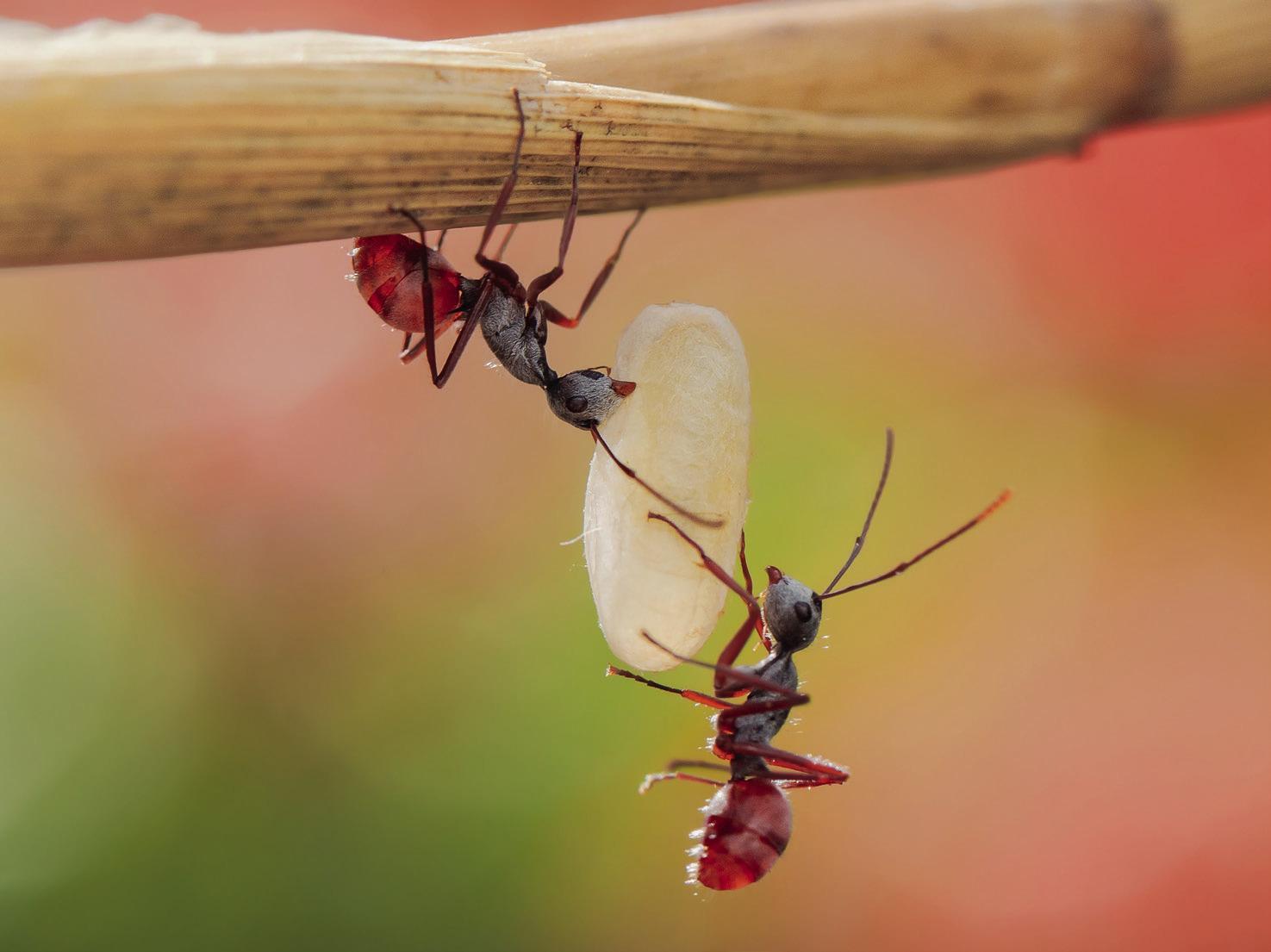
Ants will protect Honeydew insects from natural predators.
Photo from Metro Creative
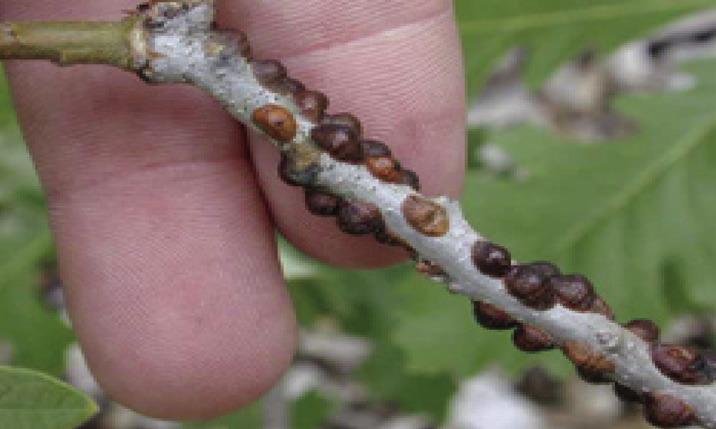
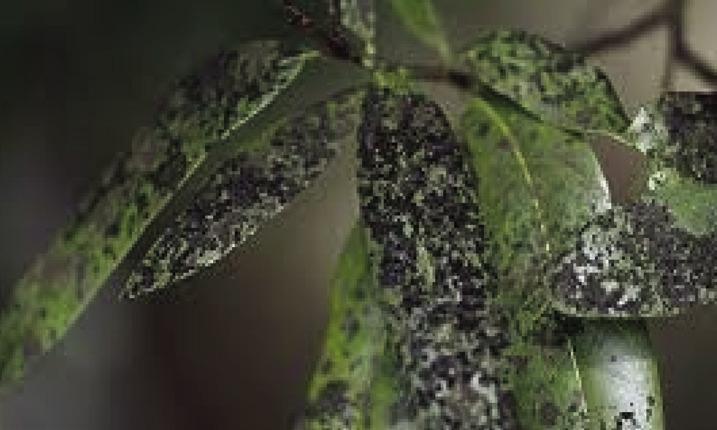
Scale insects produce Honeydew, which attracts fungi, which causes sooty mold.
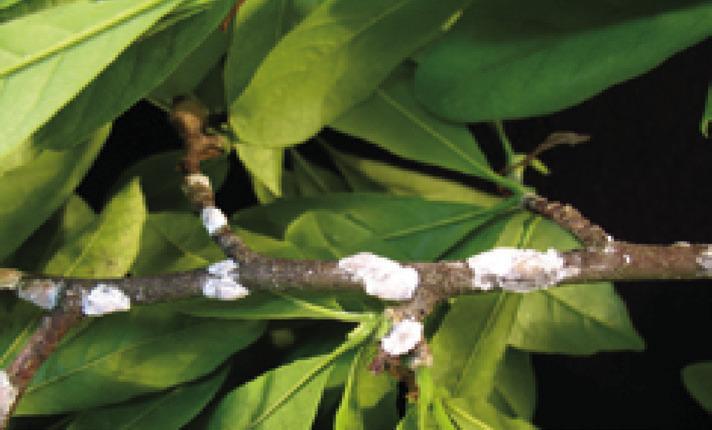
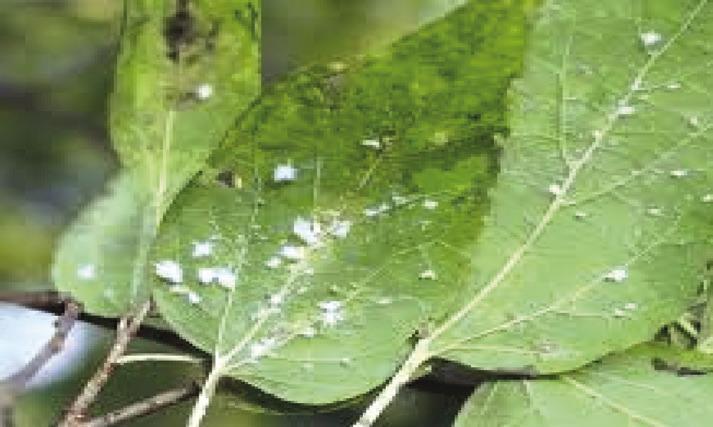
The fungi species depends on a number of factors.
Submitted photos
Summer Gardens
Now that summer is upon us, our plants may begin to show signs of stress in the form of disease. One of the common problems is black mold on the leaves and stems of our landscape plants. This sooty-looking mold is a dark fungus. A plant owner’s reaction is to treat the mold and kill the fungi, but this is not the original cause of the problem. The process begins with insects who come to eat the sap produced by the plant. Not all insects partake of this sap. This is done primarily by scale insects. The scale insects are small insects of the order Hemiptera, suborder Sternorrhyncha. There are about 8,000 described species of scale insects. The insects that belong to this suborder include scale, aphids, leafhoppers, mealybugs, psyllids, soft scales, lerps, cottony scales and whiteflies insects.
Scale insects are different from other insects in that they only have their six legs when they are in the “crawler” stage. These tiny (pinhead size) insects are very active but have no protective shell. When they reach maturity, they lose their legs or antennae and replace it with a protective shell. These shells may be hard or soft as seen shown in the adjacent photos.
When the scale insect is on a plant that produces sap, it uses its long, needle-like mouth part to pierce the plant and suck up the sap. While feeding, the insect excretes a sticky material called Honeydew (nothing to do with the melon). When this Honeydew is on the foliage and branches, it can attract other types of insects who desire this sweet food such as ants, bees, wasps and flies. Ants, in fact, can be a clue that this process is going on as they will protect Honeydew insects from their natural predators.
Honeydew also draws fungi who feed and grow on this excreted liquid. The fungi that commonly causes sooty mold is in the genera Capnodium Fumago and Scorias. The fungi species depends on the host plant, the insect species and the environment. Plant owners will only discover this process has been going on when the sooty mold appears. Our warm temperatures and humidity encourage its growth. The wind can blow the sooty mold fungi spores to other plants. Sooty mold does not infect the internal systems of a plant. However, their coating can prevent the sun’s light, which is needed for photosynthesis, from penetrating leaves. The sooty mold may then inhibit a plant’s growth.
Now to the treatment of this sootymold fungi problem. Help keep the plant healthy by monitoring and watering it. Management can begin with getting rid of the big-brother ants so natural predators (like ladybugs and lizards) and parasites can eat up the scale insects and their Honeydew. Smearing petroleum jelly or a sticky substance on a trunk or branch can prevent ants from protecting the Honeydew. Setting out ant-baits around the plant will help. At the same time, you can try picking off the scale bugs, trimming infested leaves and branches, and hosing off the insects with a strong stream of water. Dormant oil can be used in the winter before plant growth and blooming. Also, multiple doses of horticultural oil, neem oil and insecticidal soaps can be used yearround. Insecticides that are absorbed into the plant’s system can be applied. As with any commercial chemical product used, read the label and follow the directions carefully. Sooty mold can then be trimmed, hosed away or washed off with soap and water. Now, you know what Honeydew has to do with it.
Hays County Master Gardeners are now accepting applications for the Fall 2023 Training Class. Applications are available on our website: hayscountymastergardeners. org, my emailing HCMGA@hayscountymastergardeners. org, or by calling the Texas A&M Agrilife Extension Office at 512-393-2120.











